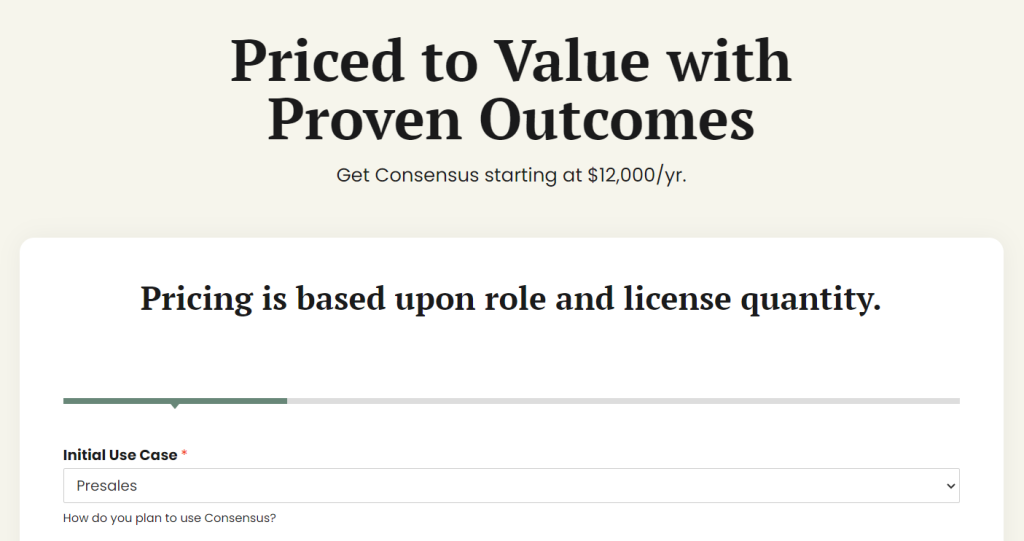Pipeline quality is a constant battle in SaaS sales teams. How do you reduce the number of poor quality calls on AE calendars, without dropping the total number of good leads? Let's explore some tactics you can implement to improve the average quality of your sales pipeline!
What exactly do we mean when we talk about ‘sales pipeline quality'?
To clarify, we're talking about low-quality demo bookings. Specifically, how to avoid them. They eat up your AEs time, and add frustration to their day. ‘Low quality' can mean different things in different situations, but ultimately, we're looking to prevent people who are unlikely to buy from getting onto your calendar.
1. Implement interactive demos
Let's begin by talking about interactive demos. That is, adding an ungated interactive tour of your product to your website. Here's some interactive demo examples.

When you let prospects see the product in advance, you cut out fluff.
Minimizing low-quality bookings saves your valuable time and resources and ensures you have a leaner, more focused pipeline.
Basic questions about features & functionality are already pre-answered, so by the time you get to a sales call, you can focus on more important stuff.
To make one, you'll need interactive product demo software like Navattic. Those tools capture the frontend of your website, and guide you through the process of creating an annotated product walkthrough to embed wherever you want.
2. Make your pricing public
Next, we’ll tackle the controversial subject of public pricing. It might seem counterintuitive, but transparency in pricing can be a game-changer for pre-qualifying leads for your SaaS business.
Displaying your pricing can save valuable time by deterring prospects who can’t afford your services.
But what if you really can't display exact pricing publicly? In those cases, you should display a starting price, or at least tell the user how pricing is calculated. Consensus are a great example of this, doing both:

Transparent pricing also establishes a foundation of trust with your prospects. It shows you have nothing to hide and reduces the potential for misunderstandings or surprises later in the sales process.
3. Understand the diversity of your sales prospects
To fully grasp the quality of your sales pipeline, your success is all about understanding your audience. Appreciating the variety among your sales prospects allows you to tailor your approach effectively.
Not all prospects are the same, and understanding their unique needs, pain points, and goals helps you provide the right solution. The better you know your prospects, the more targeted and personalized your pitch can be — some might be decision-makers with buying power. In contrast, others might be influencers who can advocate for your product within their organization.
By distinguishing between these roles, you're better equipped to navigate your sales conversations and adapt your marketing and sales tactics accordingly. Each prospect type may respond differently to various strategies, whether it's email marketing, social media engagement, or personalized demos.
As you gain a more nuanced understanding of your sales prospects, you're well on your way to building a more effective sales pipeline. Recognizing these differences allows you to allocate resources efficiently and optimize your strategies for each segment.
4. Implement strategic lead scoring
Having identified your prospect types, it's time you introduced strategic lead scoring into your sales process. Lead scoring is an essential tool in your sales arsenal. When refined and used correctly, it can significantly improve the quality of your sales pipeline.
A well-honed lead scoring process allows you to prioritize your prospects effectively. By assigning a value or “score” to your leads based on their potential to become customers, you can ensure your sales team focuses their time and effort on the most promising opportunities.
Refining your lead scoring process can help you identify and nurture potential customers who might need a little extra push. Not all leads will be ready to buy immediately — some may need more time or information. Lead scoring can help you identify these prospects and tailor your nurturing strategies to bring them closer to a purchasing decision.
An effective lead scoring system can also provide valuable insights into your marketing efforts. By analyzing the scores of your leads, you can understand which marketing strategies or content ideas are attracting high-quality prospects to your pipeline and which might need tweaking.
5. Leverage revenue intelligence
Revenue intelligence involves gathering and analyzing data related to your sales activities to provide actionable insights. These insights can guide your decision-making and sales strategies, ensuring they're based on solid, data-driven evidence.
For instance, revenue intelligence can help you with the following:
- Identify which sales activities are driving results. You can distribute your resources more effectively by looking at your search engine rankings and recognizing what works and what doesn’t.
- Uncover trends in your sales data. Understanding trends could be anything from identifying the most common objections to pinpointing the best times to reach out to prospects. These insights can refine your sales process to better suit your customers' needs.
- Get a clear view of your sales team’s performance. This data, such as call durations or deal closing rates, can highlight strengths and areas for improvement.
You’ll pave the way for a higher-quality sales pipeline by continually gathering insights and making data-driven decisions
6. Check in regularly with sales pipeline auditing
Having a range of initiatives to enhance your sales pipeline is great. Still, it's equally crucial to periodically audit your sales process to help you ensure everything runs as smoothly as expected.
Regular auditing can help identify bottlenecks or hurdles that may slow down or hinder your sales process. By recognizing these issues early, you can immediately address them, ensuring your pipeline remains efficient.
Auditing gives you a chance to assess the effectiveness of your strategies. This auditing involves looking at whether your interactive demos are qualifying leads effectively, your pricing transparency is affecting lead quality, or your revenue intelligence is guiding your sales strategies as it should.
Auditing your pipeline can help you track and monitor your team's performance. By assessing metrics, such as deal closure rates or response times, you can identify areas where your team excels and where there might be room for improvement.
Remember, auditing your sales pipeline isn't just about spotting problems; it's about recognizing opportunities for enhancement. It's a chance to take a step back, review your strategies, and fine-tune your approach to continually improve your sales pipeline quality.
So, make regular audits a habit — your pipeline (and your sales team) will thank you for it.
Final thoughts
As we wrap up, remember that these aren't just individual strategies — they're components of an overall ethos. To truly improve your SaaS sales pipeline quality, you need to make quality a core value, integral to your entire sales process, and deeply ingrained in your business operations, your team mindset, the technology and systems you use, and every decision you make.
Whether using interactive demos, being transparent about pricing, getting closer to your sales prospects, refining your lead scoring process, leveraging the power of revenue intelligence, automating invoice processing, or conducting regular pipeline audits, each of these initiatives contributes to enhancing pipeline quality. But they’re most effective when working together as part of a holistic, quality-focused strategy.
Improving your sales pipeline quality is about more than just implementing strategies. It's about creating a culture that values quality in every aspect. The results — a more efficient sales process, satisfied customers, and increased revenue — will be worth the effort.
